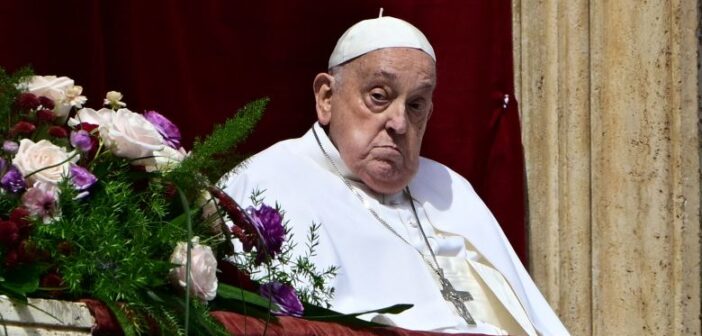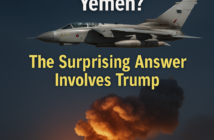The death of a pope is not only a moment of global mourning—it marks the beginning of one of the world’s most secretive and fascinating political-religious processes: the election of a new pope. While millions watch from afar, few understand the intricate steps, age-old rituals, and real human drama behind the scenes. This article uncovers the truth behind the white smoke, the ancient rituals, and the power dynamics that shape the future of the Catholic Church.
1. What Happens Immediately After a Pope Dies?
image:cnn
The moment a pope dies, the Vatican enters a period called “sede vacante” (Latin for “the seat being vacant”). During this time, the ordinary operations of the Holy See are limited. The Camerlengo (Chamberlain of the Holy Roman Church) assumes a central administrative role.
The Camerlengo verifies the pope’s death in a ceremonial fashion—traditionally by gently calling the pope’s baptismal name three times. If there is no response, he declares the pope dead and seals the papal apartment.
Reference: Holy See Press Office – Apostolic Constitution Universi Dominici Gregis (1996)
2. The Conclave: A Locked-Room Battle of Faith and Politics
A conclave (from Latin cum clave, “with a key”) is held within 15 to 20 days of the pope’s death. The College of Cardinals—those under age 80—gather in the Sistine Chapel, where they are physically locked in to ensure secrecy.
Key Rules of the Conclave:
- Up to 120 cardinals can vote.
- A two-thirds majority is required to elect a new pope.
- No communication with the outside world is allowed.
The conclave is less about politics in the traditional sense and more about global representation, ideological leanings (e.g., conservative vs. reformist), and personal relationships.
3. Case Study: The Election of Pope Benedict XVI (2005)
When Pope John Paul II died in 2005, the world watched anxiously as cardinals gathered. Joseph Ratzinger, the influential German cardinal and head of the Congregation for the Doctrine of the Faith, was widely seen as the conservative frontrunner.
Behind the scenes, according to journalist John L. Allen Jr., Ratzinger’s years of relationship-building and theological clarity helped consolidate support early in the voting. He was elected on the fourth ballot—a fast turnaround by historical standards.
Insight: In modern conclaves, early alliances and global representation (e.g., Latin America, Africa, Asia) play a major role in determining frontrunners.
4. Why Geography Matters in Papal Elections
Historically, most popes have been Italian, but the 21st century has marked a shift.
- Pope John Paul II (1978) broke the Italian line after 455 years.
- Pope Francis (2013) became the first Jesuit and the first pope from Latin America.
As the Church grows fastest in the Global South, particularly in Africa and Asia, many speculate the next pope could hail from these regions.
Actionable Insight: For Church leaders and observers, understanding demographic trends in Catholicism can offer clues about future elections.
5. Modern Pressures on the Next Pope
Today’s popes must navigate more than just spiritual matters. From abuse scandals to LGBTQ+ inclusion, financial transparency, and global crises like climate change, the job description has expanded exponentially.
The cardinals often weigh:
- The candidate’s media savviness
- Language skills (fluency in Italian is still key)
- Stance on reform and Vatican II
- Crisis management ability
Case Example: Pope Francis was elected partly because of his reputation for humility, reform-mindedness, and work with the poor in Buenos Aires.
6. The Moment the World Waits For: The White Smoke
Once a pope is elected and accepts, ballots are burned with chemicals to produce white smoke—a signal seen by thousands in St. Peter’s Square and millions worldwide.
The new pope then steps onto the Loggia of the Blessings and announces his chosen name. This name often signals his intended mission:
- Francis chose his name to signal humility and a focus on the poor, in honor of St. Francis of Assisi.
- Benedict XVI emphasized continuity and doctrinal clarity.
Final Thoughts: A Process Both Ancient and Evolving
While the papal election may seem steeped in ancient ritual, it’s deeply influenced by global shifts, modern pressures, and strategic deliberations. The next conclave—whenever it comes—will not just determine the leader of 1.3 billion Catholics but will shape the moral compass of the world stage.
References:
- Vatican. Universi Dominici Gregis (1996). Link
- Allen, John L. Jr. Conclave: The Politics, Personalities and Process of the Next Papal Election. (2002)
- Pew Research Center. “The Future of World Religions: Population Growth Projections, 2010-2050.” (2015)
- National Catholic Reporter. “Inside the Sistine Chapel: Secrets of the Conclave.” (2013)



